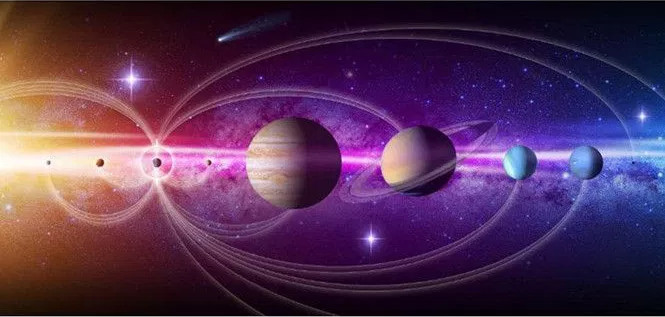New NASA missions
The latest mission of the US Aeronautics Agency will either take the robotic spacecraft onto Saturn's Titan moon or collect specimens from the core of a suitable comet.
A cruise to Titan or chasing comets are two of the 12 plans submitted to the New Frontiers program of the US Aerospace Agency (NASA) in the near future. .
In the first project, called Dragonfly , the robot looks like a quadcopter (4-wing type) with equipment capable of identifying large biological molecules. Described as an unprecedented form of mission, the quadcopter can fly to many locations hundreds of kilometers apart to study the landscape on Titan's surface.
Titan, the icy moon, remains by far Saturn's largest natural satellite, with a dense atmosphere, and lakes and rivers that are melting. Scientists now question the possible existence of a water ocean beneath the frozen crust of the celestial body.

NASA aims for special missions in the near future.
Lead author Elizabeth Turtle of Johns Hopkins University's Applied Physics Laboratory (USA) said the environment on Titan harbored elements of life. If Dragonfly can be deployed, they can assess the level of evolution of prebiotic evolution, the kind of material that existed before life could reproduce, on Saturn's moon.
The second project called CAESAR , short for Comet Biological Sampling Exploration, under which a spacecraft will be sent back, the entity of the European Space Agency (ESA) revolves around the word from 2014 to 2016. After reuniting with celestial bodies of the size of Mount Fuji, CAESAR will take samples from the surface and send them to Earth as scheduled in November 2038.
NASA once sampled comets, specifically the mission of the Stardust cruise ship, collecting dust from the Comet Wild 2. However, CAESAR will be the first mission to take material from the icy surface of the celestial Mysterious body of the solar system.
'Comets are in a group of celestial bodies that are extremely important in the scientific aspect of our star system, but rather in the least informative group,' according to The Washington Post quoted the team leader as investigating. Cornell University's Steve Squyres project (USA).
Researchers believe that comets themselves bring water and biological molecules to the early Earth, so it is likely to contribute significantly to the origin of life. Samples from 67P / Churyumov-Gerasimenko will include 'unstable' molecules that can easily evaporate, but provide key points in their attempts to understand the origin and history.
The two projects have entered the conceptual research phase, before NASA decided to choose the mission to win the most consensus in July 2019. Next, the related spacecraft will be launched into space around 2025.
- How much does NASA spend on space exploration missions?
- NASA has just opened two new missions to learn more about the Sun.
- With $ 19.5 billion of pumping, many of NASA's missions soon became a reality
- The Apollo 11 astronaut revealed an unpublished photo
- Vivid images of space astronauts
- The reason why NASA decided men could not travel to Mars
- NASA connected with the spacecraft that had lost its signal two years ago
- NASA planet-like planet hunters will search in the vicinity
- USD 750,000 from NASA for anyone who finds a way to turn CO2 on Mars into other molecules
- NASA funded a million USD for the Tess project
- NASA announced two missions to decipher the mystery of the Solar System
- The most important tasks in NASA history (Part 1)
 Van Allen's belt and evidence that the Apollo 11 mission to the Moon was myth
Van Allen's belt and evidence that the Apollo 11 mission to the Moon was myth The levels of civilization in the universe (Kardashev scale)
The levels of civilization in the universe (Kardashev scale) Today Mars, the sun and the Earth are aligned
Today Mars, the sun and the Earth are aligned The Amazon owner announced a secret plan to build a space base for thousands of people
The Amazon owner announced a secret plan to build a space base for thousands of people